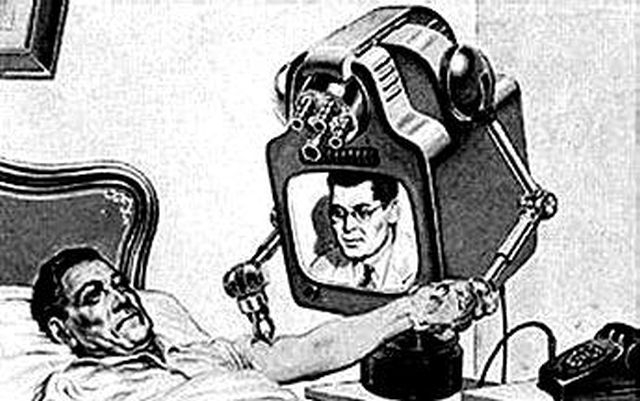Exploring the Benefits and Obstacles of Teledoctors in Modern Medical Care
As the health care landscape develops, teledoctors have actually emerged as a pivotal element in bridging spaces in medical accessibility and performance. How can the healthcare market equilibrium these benefits with the integral difficulties?
Expanding Accessibility to Treatment
Telemedicine has actually emerged as a crucial development in modern-day healthcare, significantly broadening accessibility to take care of varied populations. By leveraging electronic modern technology, teledoctors have transformed the traditional health care distribution version, making it possible for clients in remote or underserved locations to receive timely clinical appointment. This evolution is particularly advantageous for people staying in rural neighborhoods, where the deficiency of healthcare centers and specialists usually leads to delayed or insufficient therapy.
Teledoctors contribute in bridging the space developed by geographical obstacles. Via virtual assessments, individuals can access a variety of medical care services without the need for comprehensive travel. This is particularly helpful for those with flexibility issues or persistent problems calling for constant medical attention. Furthermore, telemedicine improves continuity of treatment by making it possible for normal follow-ups and surveillance, therefore boosting person end results.
The integration of teledoctors right into medical care systems also supports the management of public wellness dilemmas by helping with rapid response and triage. Throughout pandemics, for example, digital examinations minimize the concern on physical medical care centers, reducing exposure risks for both patients and medical care companies. As telemedicine remains to advance, it guarantees to reshape the landscape of medical care ease of access, making it more reliable and inclusive.
Cost-Effectiveness of Teledoctors
The cost-effectiveness of teledoctors is a significant aspect driving their widespread fostering in health care systems. By reducing the requirement for physical infrastructure and in-person brows through, teledoctors use a more economical option to conventional healthcare shipment. This version allows doctor to lower functional expenses, such as those related to keeping physical offices and utilizing considerable on-site staff. teledoctors. Subsequently, these savings can be passed on to people in the form of decreased appointment charges, making healthcare much more obtainable to a broader population.
Additionally, teledoctors promote an extra reliable use medical care sources by decreasing unnecessary emergency room gos to and hospital admissions. Individuals can access timely assessments for small disorders or follow-up treatment, which assists to ease the worry on overstretched healthcare facilities. This effectiveness not only results in cost financial savings for healthcare service providers but additionally reduces the financial pressure on people that may otherwise face costly hospital costs.
In addition, teledoctors can aid in handling chronic diseases better by offering consistent surveillance and timely interventions. This aggressive technique can avoid complications, thereby reducing lasting treatment costs. On the whole, teledoctors provide a viable remedy to the rising prices of health care, while maintaining top quality care distribution.
Enhancing Client Convenience
While cost-effectiveness plays a pivotal duty in the increase of teledoctors, enhancing individual benefit stands as an additional compelling benefit of this health care model. With the assimilation of teledoctors, individuals can bypass the traditionally lengthy process of scheduling and participating in in-person visits. This version removes the requirement for traveling, decreasing time invested in transit and waiting helpful resources spaces, thereby using significant time financial savings for patients. Especially for those with mobility problems or staying in remote areas, teledoctors offer an essential link to healthcare that might otherwise be hard to reach.
Additionally, teledoctors provide adaptable scheduling, permitting patients to set up assessments sometimes that best fit their specialist and personal dedications. This adaptability is important for people balancing requiring work routines or family members responsibilities, making certain that healthcare can be integrated flawlessly into their lives. In addition, the ability to gain access to clinical specialists from the comfort of one's home can result in boosted patient involvement and adherence to treatment plans, as the barriers to seeking treatment are lowered.
The convenience offered by teledoctors not only boosts the patient experience but likewise contributes to a much more receptive and reliable medical care delivery system, ultimately sustaining far better wellness end results.
Addressing Privacy Worries
Amid the expanding fostering of teledoctors, privacy worries become a substantial factor to consider. As healthcare increasingly depends on digital platforms, making sure the confidentiality of client details comes to be extremely important. The digitization of medical records and using telecommunication technologies demand durable security steps to shield sensitive data from unauthorized gain access to and breaches.
Doctor must stick to rigorous regulations, such as the Medical Insurance Mobility and Accountability Act (HIPAA) in the USA, which develops nationwide requirements for safeguarding clinical information. Compliance with such regulations is crucial in preserving client count on and ensuring their information is taken care of sensibly. Encryption of information, safe interaction networks, and routine audits are several of the procedures that can be applied to boost information security.
Regardless of these actions, obstacles continue. Cybersecurity dangers are developing, and healthcare organizations have to continue to be alert to new susceptabilities. Additionally, educating both patients and doctor regarding finest techniques in data privacy is necessary. This includes recognizing the limitations of data and the relevance of secure login qualifications. teledoctors.
As teledoctors end up being extra integral to healthcare delivery, dealing with personal privacy issues is vital to make sure both the efficiency and reliability of these services.

Browsing the Digital Separate
Bridging the digital divide is an important obstacle in the widespread adoption of teledoctors. teledoctors. This divide incorporates disparities in access to digital innovation, specifically amongst country, low-income, and senior populations. These groups commonly do not have the necessary devices, reputable web connection, or electronic proficiency needed for efficient involvement in telehealth solutions. Subsequently, the advantages of teledoctors-- such as increased accessibility and benefit-- stay unreachable for lots of people that might most gain from them.
Efforts to reduce this divide necessitate a multi-faceted approach. Policymakers have to focus on facilities advancement to enhance net gain access to in underserved locations. Additionally, initiatives to subsidize modern technology for low-income houses can play an essential function in guaranteeing equitable access. Doctor and area organizations should team up to use digital proficiency programs, equipping clients to browse telehealth systems confidently. In addition, developing user-friendly user interfaces can even more boost access for all demographics, especially the senior.

Conclusion
The assimilation of teledoctors into modern-day healthcare uses significant advantages, including boosted access to care, cost-effectiveness, and enhanced person benefit. Nonetheless, challenges such as personal visit our website privacy concerns, the digital divide, and cybersecurity hazards should be resolved to take full advantage of these benefits. By executing robust information security actions, improving digital proficiency, and ensuring protected technical infrastructure, the capacity of teledoctors can be completely click now recognized, promoting fair medical care delivery and transforming the healthcare experience for all people.
